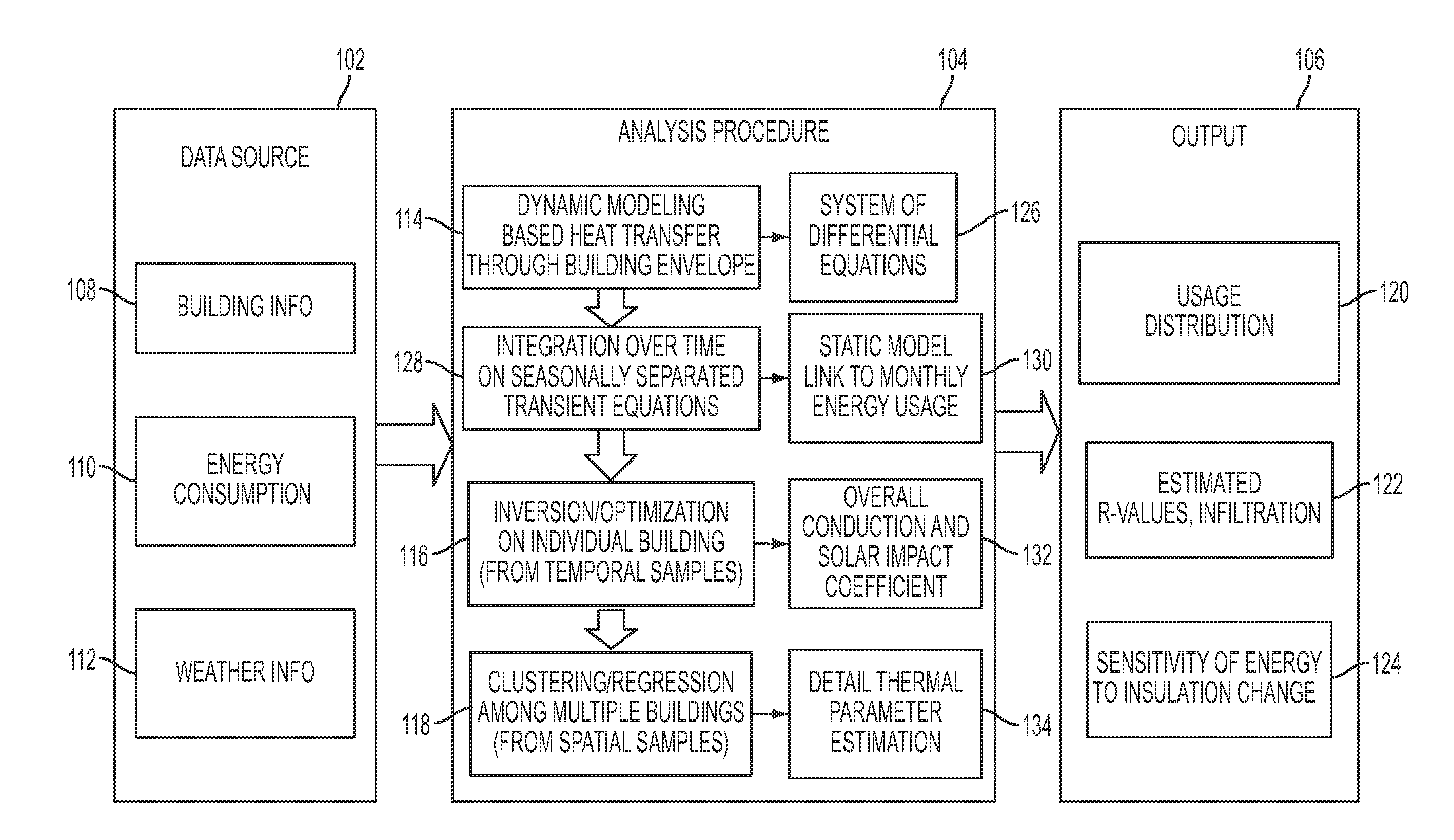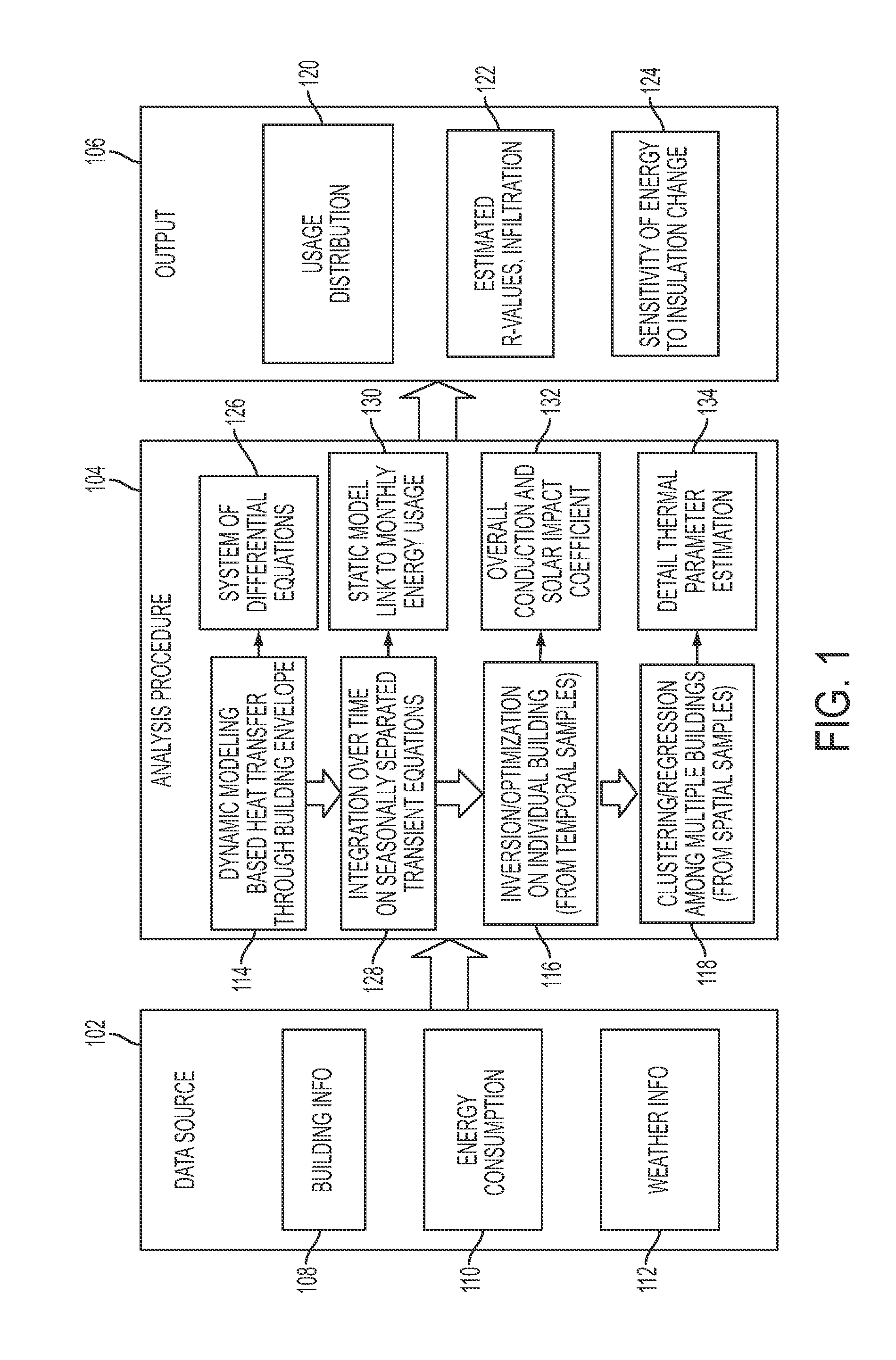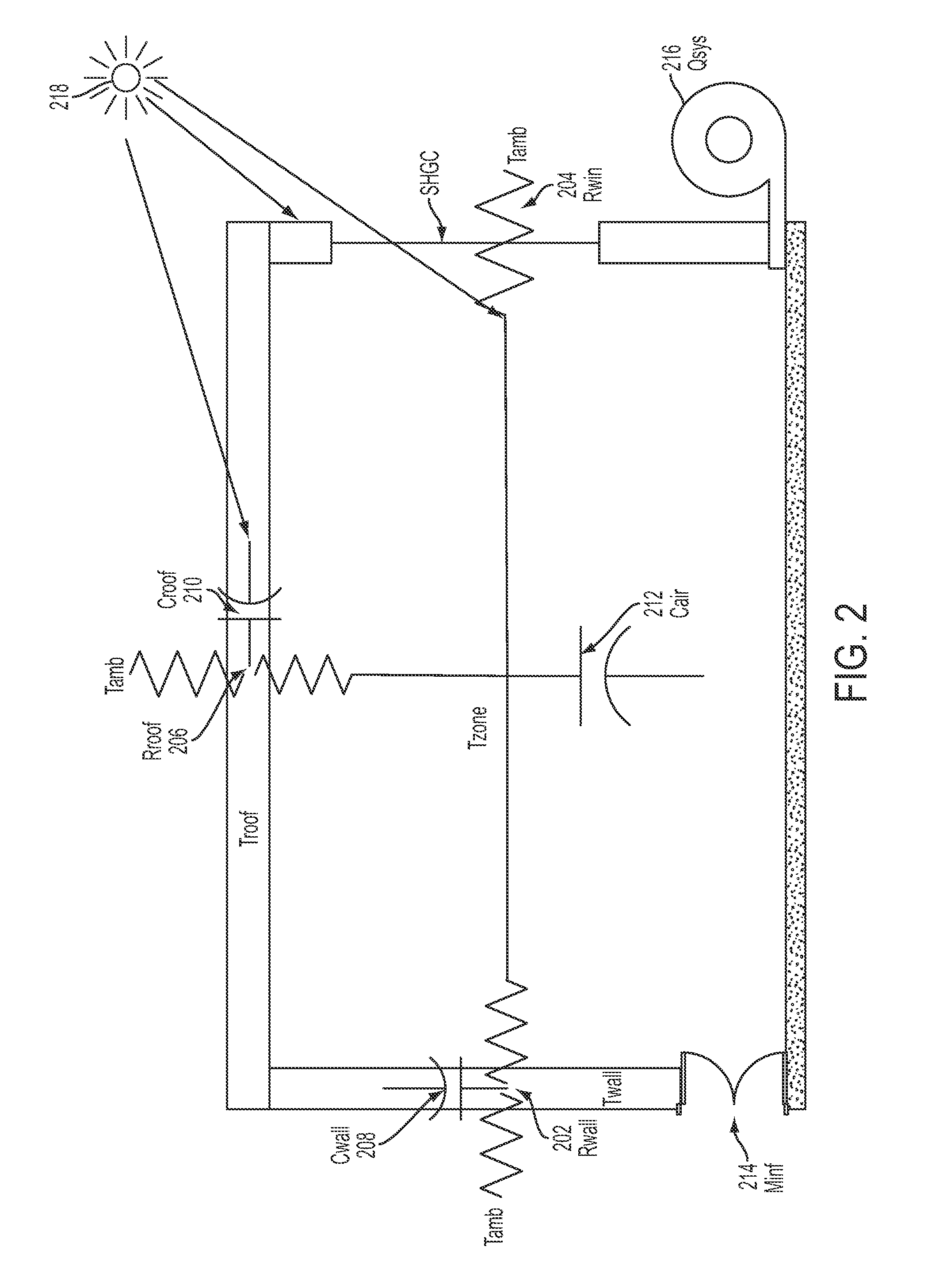Estimating building thermal properties by integrating heat transfer inversion model with clustering and regression techniques for a portfolio of existing buildings
a technology of building thermal properties and clustering, applied in the field of building thermal properties estimation, can solve the problems of limited observable data and hinder the use of building thermal modeling, and insufficient building information
- Summary
- Abstract
- Description
- Claims
- Application Information
AI Technical Summary
Benefits of technology
Problems solved by technology
Method used
Image
Examples
Embodiment Construction
[0015]The present disclosure describes estimating buildings' thermal parameters, also referred to as heat transfer parameters of building envelopes. The building envelopes physically separate the interior and the exterior environments of a building, and may be also referred to as the building enclosure. In one embodiment, a methodology of the present disclosure may estimate building's thermal parameters from limited observation data (limited with respect to the number of sensors in actual operating condition). The parameters that are recovered or estimated in the present disclosure may include thermal properties of building fabrics such as wall, roof, and windows, and heat exchange due to air infiltration through openings of building envelope, or any combinations thereof. A model that estimates building's thermal parameters in the present disclosure in one embodiment is built considering that, the higher the resistance of a building's envelope to the outside climate (e.g., high temp...
PUM
 Login to View More
Login to View More Abstract
Description
Claims
Application Information
 Login to View More
Login to View More - R&D
- Intellectual Property
- Life Sciences
- Materials
- Tech Scout
- Unparalleled Data Quality
- Higher Quality Content
- 60% Fewer Hallucinations
Browse by: Latest US Patents, China's latest patents, Technical Efficacy Thesaurus, Application Domain, Technology Topic, Popular Technical Reports.
© 2025 PatSnap. All rights reserved.Legal|Privacy policy|Modern Slavery Act Transparency Statement|Sitemap|About US| Contact US: help@patsnap.com



